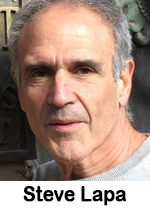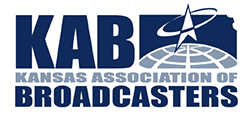Pending Business: One Billion and Counting
By Steve Lapa
Lapcom Communucations Corp
President
 Let’s talk streaming because I don’t get what is happening. Maybe you do.
Let’s talk streaming because I don’t get what is happening. Maybe you do.
Talk shows place decent cameras in the radio studio, maybe one in the control room, possibly a third at a “producer’s” desk, a flat screen or two with cool visuals in the background to fulfill the coolness quotient, push the video stream to YouTube or another platform and wait for the throngs of followers to find the talk radio show, view, subscribe and stay with it until the numbers are staggering.
Sometimes the video stream is promoted on air or your station’s website and the expectation is the online audience will skyrocket. After several months, the viewer numbers don’t skyrocket, or maybe the numbers develop modestly, but sales becomes the art of packaging. Because the scale necessary to move the sales needle is still not happening.
This is not a hypothetical. This is happening today at some of the best radio stations delivering high-level radio programming in markets of all sizes around the country. Why do we struggle with how to turn the best radio programming in the world into competitive online video content?
The short answer is great talk radio programming is just that: great radio programming. But herein lies the dilemma. Great talk radio talent, in any format, are natural masters of the foundational elements that can make their YouTube, Rumble, and other social media video platforms gain audience and successfully generate revenue.
Let’s identify the most important reason why:
1. Authentic. Show me one successful talk radio host in any talk radio format who does not exude “authentic.” Agree or disagree with the host on politics, sports, finances or fishing, great talk show hosts are authentic, and their audience can sense the passion coming through in every show. Now, let’s identify the nasty four-letter word, stopping many great talk talents and their content from performing competitively on current social media video platforms. That four-letter word?
2. Show. Most great talk radio talents understand what it takes to put on a great “show.” Mechanics, formatics, and unique skills are developed over time designed to maximize Nielsen performance. But often, many of these – forgive me here – old media “show” skills are not relevant to the huge audience now consuming 1 billion hours of YouTube video every day. Yet we persist and video stream the radio “show” with the expectation an online audience will skyrocket, sales will explode, and the future is as easy as hitting the send button. It just does not work that way.
The radio industry has developed many of the greatest “authentic” talents in the world. How will we plan for a future that has billions of hours of consumption?
Steve Lapa is the president of Lapcom Communications Corp. based in Palm Beach Gardens, FL. Lapcom is a media sales, marketing, and development consultancy. Contact Steve Lapa via email at: Steve@Lapcomventures.com.




 For the last several years, KSHSAA has opted into agreements with third parties that prevented local broadcasters from video-streaming games when the exclusive partner opted to do so. Kansas Association of Broadcasters president Allison Mazzei states, “I’m pleased that now, in post‐season, friends and families of student athletes will have access to free, quality coverage from the same broadcasters who cover their teams all season long. Local high school sports should be covered by local broadcasters. Our broadcasters depend on the revenue generated from high school sports coverage to stay on air and provide local news, weather, entertainment, and emergency alerts that communities depend on.” The KAB also notes students interested in pursuing careers in radio broadcast will also benefit from the legislation. Previously, if a local station was prohibited from video streaming a post‐season game, so were their student workers. Now, students will be able to cover all of their school’s activities regardless if it takes place in post season.
For the last several years, KSHSAA has opted into agreements with third parties that prevented local broadcasters from video-streaming games when the exclusive partner opted to do so. Kansas Association of Broadcasters president Allison Mazzei states, “I’m pleased that now, in post‐season, friends and families of student athletes will have access to free, quality coverage from the same broadcasters who cover their teams all season long. Local high school sports should be covered by local broadcasters. Our broadcasters depend on the revenue generated from high school sports coverage to stay on air and provide local news, weather, entertainment, and emergency alerts that communities depend on.” The KAB also notes students interested in pursuing careers in radio broadcast will also benefit from the legislation. Previously, if a local station was prohibited from video streaming a post‐season game, so were their student workers. Now, students will be able to cover all of their school’s activities regardless if it takes place in post season.